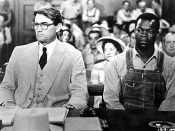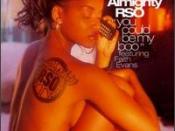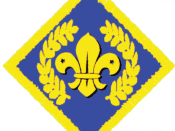Throughout the novel, To Kill a Mockingbird, Scout, the narrator of the story, encounters many adventures in Maycomb, a town full of the disease of prejudice. She shows her curiosity and independence as a child by questioning and wondering about life in her community. Her independence leads her to question many of the prejudiced beliefs in her town, thus setting her in the minority.
Scout's independence is evidenced by her constant questioning of things around her. Sometimes, she asks questions that are very personal of people that might make them uncomfortable. When a boy named Dill, moves in next door for the summer, she immediately asks him "where his father was" . She studies Dill's appearance and finds him peculiar and labels him a "curiosity" (7). This is ironic because she calls him a "curiosity" when she is the one that is very curious. At times, her sense of curiosity pays off; such as the time she sees a piece of tinfoil "winking at [her] in the afternoon sun" (33).
Most kids, thinking that it was trash, would just let it be. Scout, on the other hand, reaches up and grabs it while standing on "tiptoe" (33). To her liking, it happens to be gum: Wrigley's Double Mint to be exact. Scout, her typical curiosity leading her to try most anything, "cram[s] it into [her] mouth" (33) and enjoys it. Yet, on a broader scale, Scout is always trying to find out about the world around her by reading books and asking questions. "[She] knew nothing except what [she] gathered from Time magazine and reading everything [she] could lay [her] hands on" (33). She learns a lot from reading, but she also learns about the world by questioning. She always asks Atticus, her father, the meaning of things, such...


